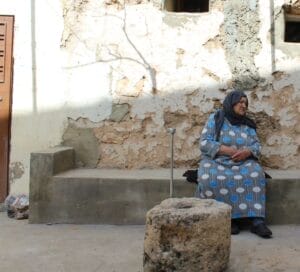
A snapshot of rural reality in Lebanon
For the past couple of years, a combination of economic, political, financial, security and sanitarian crisis is testing the capacities of the Lebanese society as a whole.
Following the government decision to introduce new taxes, on 17 October 2019 peaceful protests sprung up across the country with tens of thousands of people calling for the resignation of all political representatives, an end of corruption, and for accountability. Ultimately, the cabinet resigned but what came to be known as the October Revolution did not lead to any major changes. On the contrary, the economic and socio-political challenges led the country to default on its foreign debt for the very first time in March 2020.
Moreover, the local currency started experiencing a sharp devaluation trend late in 2019. Traditionally pegged to the US dollars, the Lebanese lira has lost 90 percent of its value and, as of mid-March 2021, is trading at around 15,000 to the dollar[1], compared to the fixed official exchange rate of 1,507.5.

In addition, the pandemic outbreak has hit hard the Levantine country, which has witnessed high numbers of COVID-19 infections, putting under extreme pressure the already weakened health sector.
On August 4th, another dramatic event shook the lives of the Lebanese society: an explosion wreaked havoc at the port of Beirut, killing at least 190 people, injuring more than 6,500 and leaving around 300,000 people homeless. The blast was caused by tons of ammonium nitrate that had been stored unsafely in a warehouse. However, seven months after the explosion the investigation has reached a deadlock and the people are still waiting for answers.
Livelihoods compromised
Against this unfortunate backdrop, increasingly large parts of the population are struggling to meet their basic needs. In a recent report, the United Nations Economic and Social Commission for Western Asia (ESCWA) has evaluated that 2.7 million Lebanese are below the poverty line (April 2020).[2] Additionally, the compounded crises are pushing more and more Syrian refugees to the brink of extreme poverty. Figures from UNHCR reveal that, in 2020, a staggering 89 per cent of Syrian households are living under the extreme poverty line - up from 55 per cent only a year before - on less than half the minimum wage in Lebanon. [3]
At the end of 2020, WeWorld-GVC conducted a series of Focus Group Discussions and Key Informant Interviews (KIIs) with heads of municipalities and specific categories of the population, both in the rural areas of North Bekaa and in Akkar. Aimed at studying the impact of the economic crisis and the COVID-19 outbreak on the tissue of the society, the assessment revealed a dire situation.
On one side, weak governance and political instability have left local authorities with limited financial and administrative support from the national level; on the other side, the Lebanese and Syrian communities are trying to make ends meet.
All the categories interviewed - from farmers to housewives - worry about their families’ livelihoods. Rising inflation, shrinking purchase power, a stagnant job market, lockdown measures are piling up, thus forcing the rural population to resort to negative coping mechanisms - such as child labour, school dropout, domestic violence, going into debts - in order to provide, at the minimum, for food, fuel for heating, and emergency expenses.
Furthermore, the presence of Syrian refugees has put additional strain on already underperforming public services, and access to the labour market, thus exacerbating Lebanese-Syrian competition for jobs. Currently, most refugees are denied legal residency or the right to work. Syrians can work legally in only three low-skilled sectors: agriculture, construction, and as janitors. As a result, many find jobs in the informal sector, where conditions are precarious. Hence, the volatility of the situation is demonstrated by an escalation of tensions between the hosting and the Syrian communities aggravated also by the Lebanese perception of being neglected in international aid.[4] Indeed, human rights abuses against Syrian refugees have multiplied, including collective evictions, curfews that single them out, or arrests because they lack extremely hard-to-get residency permits.
In order to delve deeper into the impact of the crisis, a series of articles is going to be released in the following weeks and it will mostly cover how two of the main categories interviewed - the farmers and the young people – are trying to counterbalance the negative effects of the current situation.
Cover photo: A building heavily damaged by the August 4th explosion in Beirut. © Francesca Volpi for WeWorld-GVC
**We are operating under the ECHO-funded Lebanon Protection Consortium to provide support to the Syrian refugees in North Bekaa and Akkar**
[1] Lebanon currency hits new low on black market amid political crisis, Middle East Eye, 16March 2021.
[2]Wealth distribution and poverty impact of COVID-19 in Lebanon, ESCWA, July 2020.
[3]Nine out of ten Syrian refugee families in Lebanon are now living in extreme poverty, UN study says, UNHCR, 18 December 2020; Vulnerability Assessment of Syrian Refugees in Lebanon, 2020.



